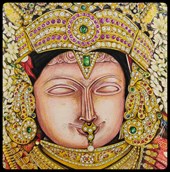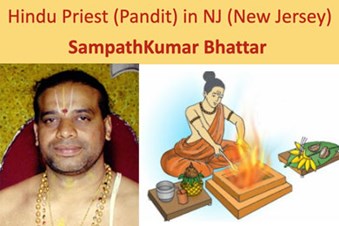Goddess Kushmanda – The Fourth Form of Navadurga
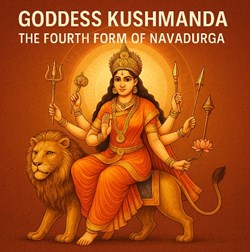
Goddess Kushmanda – The Fourth Form of Navadurga
Worship Date in 2025: 25th September 2025 (Thursday)
Significance & Benefits
Worshipping Kushmanda on Day 4 of Navratri brings:
- Vitality, health, and creative energy
- Prosperity and success in personal endeavors
- Relief from darkness, confusion, and fear
- Balance in Sun-related astrological influences
Ways to Invoke Her
- Chant: Om Devi Kushmandayai Namah
- Offer: Pumpkin, malpua, coconut, and red flowers
- Rituals: Lighting a diya with sesame oil, reciting Durga Saptashati, and offering bhog with devotion
- Wear: Orange attire to reflect her radiant energy
Introduction to Kushmanda Day 4 Navratri Goddess
Goddess Kushmanda, The Creator of the Universe with Her Divine Smile is one of the nine forms of the divine Goddess Durga. She is associated as a creator of the earth with her divine smile. However, Maa Kushmanda form is celebrated on the fourth day of Chaturthi October 06, 2024, Sunday of Navratri. This avatar of Maa Durga is also known as the smiling goddess. Her name signifies her role in the world as the ‘Ku’ word means small or tiny, Ushma means energy or warmth, and Anda means the egg, indicating the cosmic egg of creation, finally giving the meaning as the creator of the Universe from cosmic egg or the creator of the egg-shaped Universe.
The Origin of Goddess Kushmanda Devi
According to Hindu mythology, Maa Kushmanda is believed to have emerged from the void as a form of Adi Shakti. She was the first to create light in the dark and formless universe with her divine smile. She then made the Sun, the moon, the stars, and the planets with her power and energy. She also created Brahma, Vishnu, and Shiva, the three supreme gods of Hinduism, and gave them their respective roles of creation, preservation, and destruction. She is also considered the mother of all living beings and the source of all knowledge and wisdom.
The Iconography of Devi Kushmanda
Kushmanda Mata is often depicted riding on a Lion or Tiger and as Ashtabhuji, the one with eight hands. She holds a chakra (discus), Shula (trident), gadha (mace), dhanu (bow), bana (arrow), Padma (lotus), mala (rosary), and two aesthetic jars, one filled with blood and the other with elixir (Amrutha). Her one hand is always on abhayamudra, from which she blesses all her devotees. She has three eyes, a pleasant face, and a gentle smile. Her complexion is golden and radiant like the Sun. She wears a red saree and ornaments made of gold and pearls.
The Worship of Mata Kushmanda
Mata Kushmanda is worshipped on the fourth day October 6, 2024, Sunday of Navratri (nine nights of Navadurga) and is believed to improve health and bestow wealth and strength. She is also worshipped on Kushmanda Navami, which falls on the ninth day of Kartik month in some parts of India. She is offered white pumpkin or kushmanda as a special offering, as it is believed to be her favorite food. She is also pleased by offering red flowers, coconut, incense, lamps, fruits, sweets, and naivedya. Her devotees chant her name, mantra, and prayer and sing her praises while performing her puja.
The Legends of Maa Kushmanda
Many legends associated with Goddess Kushmanda depict her power and glory. One is related to her role in killing Mahishasura, the demon king with a boon that any man or god could not kill him. He terrorized the three worlds with his army of demons and challenged the gods to a war. The gods were helpless against him and sought refuge in Goddess Durga. She then assumed the form of Kushmanda and joined the battle along with other forms of Navadurga. She fought bravely with Mahishasura and his generals and finally killed him with her trident. She thus restored peace and order in the universe and was hailed as Mahishasuramardini, the slayer of Mahishasura.
Another legend is related to her role in saving Lord Shiva from Bhasmasura, a demon who had a boon that he could turn anyone into ashes by touching their head. He wanted to test his power on Lord Shiva and chased him all over the universe. Lord Shiva could not escape him and prayed to Goddess Parvati for help. She then took the form of Kushmanda and appeared before Bhasmasura as a beautiful woman. The Goddess seduced him with charm and asked him to dance with her. She then performed a dance move, touching her head with her hand. Bhasmasura imitated her without realizing that he would burn himself to ashes by doing so. He thus met his end by his boon, and Goddess Kushmanda’s cleverness saved Lord Shiva.
Planet controlled by Goddess Kushmanda
Maa Kushmanda is said to control the planet Sun, considered the source of light and life in Hindu astrology. The Sun represents a person's soul, ego, vitality, courage, authority, and fame. It also influences the health, career, and success of a person. By worshipping Goddess Kushmanda, one can appease the Sun and gain its positive effects. One can also overcome the adverse effects of the Sun, such as anger, arrogance, pride, and jealousy, by seeking her blessings.
The Significance of Goddess Kushmanda
Kushmanda Mata is significant for her role as the creator of the universe and the mother of all living beings. She is also significant for her role as the giver of light and energy to the world. She is the embodiment of joy, happiness, and bliss. She is the symbol of power, wisdom, and compassion. She is the protector of her devotees from all evils and dangers. She is the bestower of health, wealth, and strength to her devotees. She is the guide of her devotees towards their best path and destiny.
Book Pooja Services for Navratri 2025
Invoke Goddess Kushmanda’s blessings with verified priests and astrologers via Sulekha Religious Services in the USA and Canada.
Book now and welcome divine radiance and abundance.
Searching for Religious Services? Let’s make your search simple with professionals!
Take your Religious Services to the next level with Sulekha. Boost your online visibility, connect with more clients, and grow effortlessly!
Blogs Related to Religious Services
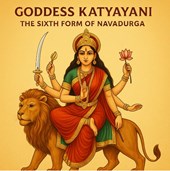
Goddess Katyayani – The Sixth Form of Navadurga
Goddess Katyayani – The Sixth Form of Navadurga Worship Date in 2025: 27th September 2025 (Saturday) Significance & Benefits Worshipping Katyayani on Day 6 of Navratri brings: Power to overcome obstacles and enemies Courage, confidence, and a

Goddess Skandamata – The Fifth Form of Navadurga
Goddess Skandamata – The Fifth Form of Navadurga Worship Date in 2025:26th September 2025 (Friday) Significance & Benefits Worshipping Skandamata on Day 5 of Navratri brings: Maternal blessings and protection for children Wisdom, compassion, a

Goddess Kushmanda – The Fourth Form of Navadurga
Goddess Kushmanda – The Fourth Form of Navadurga Worship Date in 2025: 25th September 2025 (Thursday) Significance & Benefits Worshipping Kushmanda on Day 4 of Navratri brings: • Vitality, health, and creative energy • Prosperity and success in p
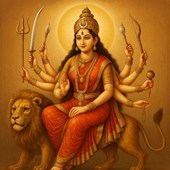
Goddess Chandraghanta - The third form of Goddess Durga
Goddess Chandraghanta - The third form of Goddess Durga Worship Date in 2025:24th September 2025 (Wednesday) Significance & Benefits Worshipping Chandraghanta on Day 3 of Navratri brings: Courage to face fears and challenges Protection from
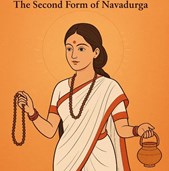
Goddess Brahmacharini – The Second Form of Navadurga
Goddess Brahmacharini – The Second Form of Navadurga Worship Date in 2025:23rd September 2025 (Tuesday) Significance & Benefits Worshipping Brahmacharini on Day 2 of Navratri brings: Enhanced focus and spiritual growth Strength to endure hards

Goddess Shailaputri The First Form of Navadurga
Goddess Shailaputri – The First Form of Navadurga Worship Date in 2025: 22nd September 2025 (Monday) Significance & Benefits Worshipping Shailaputri on Day 1 of Navratri brings: Grounding and emotional stability Strength to overcome challenge

